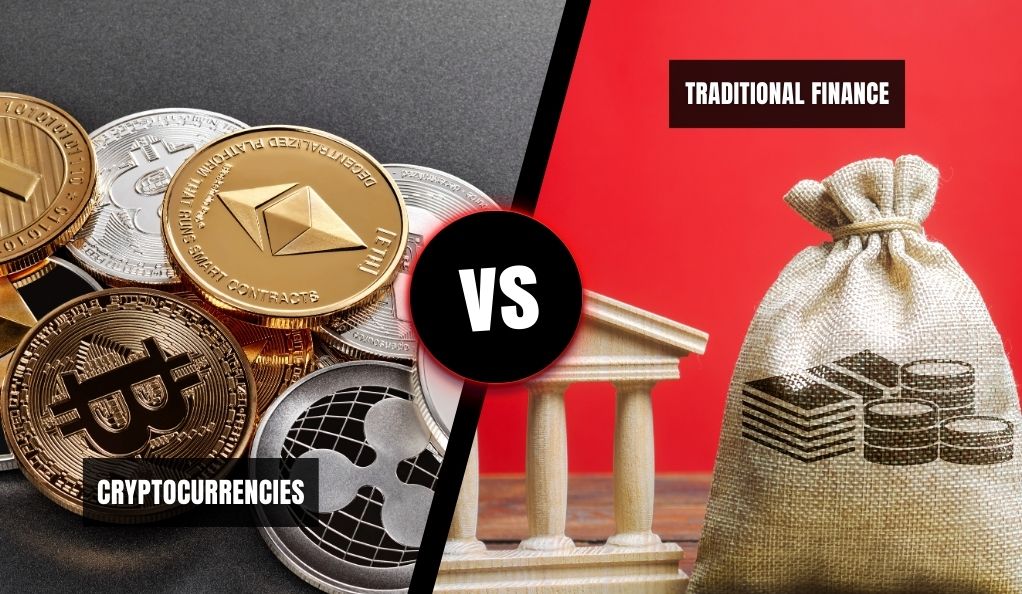In the vast realm of modern finance, cryptocurrencies have emerged as a revolutionary force, challenging traditional financial paradigms and introducing a new era of decentralized monetary systems. But what exactly are cryptocurrencies, and why have they garnered such immense attention?
What is a Cryptocurrency?
At its core, a cryptocurrency is a digital or virtual currency that employs cryptography for security, making it resistant to counterfeiting. Unlike traditional currencies issued by governments and central banks, cryptocurrencies operate on a technology called blockchain. A blockchain is a decentralized ledger of all transactions across a network of computers. This ensures that the control and verification of transactions are spread across multiple nodes, rather than a single central authority.
Key Differences Between Traditional Currencies and Cryptocurrencies
| Feature | Traditional Currencies | Cryptocurrencies |
|---|---|---|
| Issuance Authority | Centralized (Governments, Central Banks) | Decentralized (Blockchain) |
| Physical Existence | Physical (e.g., banknotes, coins) and Digital | Purely Digital |
| Transaction Verification | Through Centralized Banks | Decentralized Nodes/Miners |
| Supply Control | Regulated by Central Authorities | Predetermined by Algorithms |
| Anonymity | Limited (Transactions can be traced) | High (Pseudonymous Transactions) |
The Decentralized Nature of Cryptocurrencies
One of the most groundbreaking aspects of cryptocurrencies is their decentralized nature. Traditional financial systems rely on intermediaries like banks to process transactions and verify their authenticity. In contrast, cryptocurrencies eliminate the need for these intermediaries. Transactions are verified by network nodes through cryptography and recorded on the public ledger, ensuring transparency and security.
This decentralized approach offers several advantages:
- Security: Cryptographic protocols make it extremely difficult for malicious actors to alter transaction data.
- Transparency: All transactions are recorded on a public ledger, ensuring that anyone can verify and track transactions.
- Reduced Costs: By eliminating intermediaries, transaction fees are often lower than traditional banking systems.
- Global and Inclusive: Cryptocurrencies can be accessed and used by anyone with an internet connection, providing financial inclusion to those without access to traditional banking systems.
Cryptocurrencies, while a dominant force in today’s financial landscape, have a relatively young history. Their evolution offers a fascinating glimpse into the rapid pace of technological innovation and the shifting paradigms of modern finance.
The Genesis: Bitcoin
In 2008, an individual or group under the pseudonym Satoshi Nakamoto introduced Bitcoin through a whitepaper titled “Bitcoin: A Peer-to-Peer Electronic Cash System.” This paper proposed a decentralized digital currency system where transactions could be verified without the need for a central authority. In January 2009, the first Bitcoin block, known as the ‘genesis block,’ was mined, marking the birth of the world’s first cryptocurrency.
The Rise of Altcoins
While Bitcoin laid the foundation, it wasn’t long before other digital currencies, commonly referred to as ‘altcoins’ (alternative coins), began to emerge. Some of the notable ones include:
- Ethereum (2015): Introduced smart contracts, allowing developers to create decentralized applications on its platform.
- Ripple (XRP, 2012): Aimed at enabling real-time global payments at very low fees.
- Litecoin (2011): Created as the “silver” to Bitcoin’s “gold,” it offered faster transaction times.
| Cryptocurrency | Year of Launch | Unique Feature |
|---|---|---|
| Bitcoin | 2009 | First decentralized cryptocurrency |
| Ethereum | 2015 | Smart contracts & decentralized applications |
| Ripple (XRP) | 2012 | Real-time global payments |
| Litecoin | 2011 | Faster transactions compared to Bitcoin |
Milestones in the Cryptocurrency Timeline
- 2013: Bitcoin surpasses $1,000 in value for the first time.
- 2017: The cryptocurrency market experienced a significant boom, with Bitcoin reaching an all-time high of nearly $20,000 in December.
- 2020: Bitcoin undergoes its third ‘halving,’ an event that reduces the reward for mining new blocks by half, emphasizing its scarcity.
- 2021: Major institutions and corporations begin to adopt and invest in cryptocurrencies, signaling a shift towards mainstream acceptance.
Cryptocurrencies vs. Traditional Finance

The advent of cryptocurrencies has sparked a global debate, juxtaposing the decentralized digital assets against the longstanding pillars of traditional finance. This comparison sheds light on the transformative potential of cryptocurrencies and their implications for the future of money and banking.
Centralized vs. Decentralized Systems
Traditional financial systems operate on a centralized model, where institutions like banks, governments, and regulatory bodies hold significant authority and control. They validate transactions, issue currencies, and set monetary policies. In contrast, cryptocurrencies thrive on a decentralized model. Here, the power is distributed across a network of computers (nodes), ensuring that no single entity has overarching control.
| Feature | Centralized Systems | Decentralized Systems |
|---|---|---|
| Control | Held by institutions (e.g., banks, governments) | Distributed across a network |
| Transaction Validation | By central authorities | By network nodes/miners |
| Security | Centralized databases (vulnerable to breaches) | Blockchain (enhanced security through cryptography) |
| Accessibility | Often restricted by geography or financial status | Global access with an internet connection |
| Transaction Fees | Typically higher due to intermediaries | Generally lower, direct peer-to-peer transactions |
Challenges and Opportunities in the Financial Sector
Cryptocurrencies present both challenges and opportunities for the traditional financial sector:
- Opportunities:
- Financial Inclusion: Cryptocurrencies can cater to the unbanked population, offering them access to the global financial system.
- Efficiency: Digital currencies can facilitate faster and cheaper cross-border transactions.
- Transparency: The public ledger system of blockchain ensures that all transactions are transparent and traceable.
- Challenges:
- Volatility: Cryptocurrencies are known for their price volatility, which can deter mainstream adoption.
- Regulatory Concerns: The decentralized nature of cryptocurrencies poses challenges for regulatory frameworks.
- Public Perception: Misconceptions and lack of understanding can hinder the acceptance of digital currencies.
Economic Implications of Cryptocurrencies
Cryptocurrencies, beyond their technological allure, have profound economic implications. Their rise has not only influenced market dynamics but has also prompted a reevaluation of economic models, monetary policies, and the very essence of value.
Redefining Economic Models
- Decentralized Economy: Cryptocurrencies promote a decentralized economic model, reducing the power of central authorities and distributing it across a network. This democratization of finance can lead to more equitable economic outcomes.
- New Investment Avenues: Digital assets have become a new class of investments, attracting both individual and institutional investors. Their potential for high returns, albeit with high volatility, has reshaped investment strategies.
The Role of Mining
Mining, a crucial component of many cryptocurrency networks, has its own set of economic implications:
- Job Creation: Cryptocurrency mining has led to the creation of new jobs, from actual miners to professionals in logistics, hardware manufacturing, and software development related to mining operations.
- Energy Consumption: Mining, especially Bitcoin mining, is energy-intensive. This has raised concerns about its environmental impact and has sparked discussions about sustainable energy sources for mining operations.
Market Dynamics and Volatility
The cryptocurrency market is known for its volatility. Several factors contribute to this:
- Speculation: A significant portion of cryptocurrency trading is driven by speculation rather than fundamental value, leading to price swings.
- Regulatory News: Announcements related to the regulation of cryptocurrencies can lead to rapid market reactions.
- Adoption Rates: News related to the adoption of cryptocurrencies by major businesses or governments can influence prices.
Regulatory Landscape and Cryptocurrencies
As cryptocurrencies gain prominence, they inevitably intersect with the regulatory frameworks of various nations. This relationship is complex, with governments grappling to balance innovation with the need for oversight and protection of their citizens.
Global Regulatory Responses
Different countries have adopted varied stances towards cryptocurrencies:
- Embracing Cryptocurrencies: Some nations, like Switzerland and Malta, have positioned themselves as crypto-friendly hubs, creating regulatory environments conducive to blockchain and cryptocurrency businesses.
- Cautious Approach: Countries like the UK and Canada have taken a more cautious approach, allowing cryptocurrency operations but with stringent regulations to curb potential misuse.
- Bans and Restrictions: Conversely, nations like China and India have, at various times, imposed bans or severe restrictions on cryptocurrency trading and operations, citing concerns over financial stability, fraud, and money laundering.
| Country | Stance |
|---|---|
| Switzerland | Crypto-friendly, encouraging blockchain businesses. |
| Malta | Known as the ‘Blockchain Island’ due to its favorable regulations. |
| UK | Allows operations with strict regulations. |
| China | Has imposed bans on cryptocurrency exchanges and Initial Coin Offerings (ICOs). |
| India | Fluctuating stance, with past restrictions and current discussions on potential regulations. |
Challenges in Cryptocurrency Regulation
- Decentralization: The decentralized nature of cryptocurrencies poses a significant challenge for regulators. Traditional regulatory models are often ill-suited to oversee a system without central control.
- Rapid Evolution: The fast-paced evolution of the crypto space means that regulations can quickly become outdated, requiring constant updates.
- Global Nature: Cryptocurrencies operate globally, transcending national borders. This necessitates international cooperation for effective regulation.
Balancing Innovation and Regulation
The key challenge for regulators is to strike a balance:
- Fostering Innovation: Overly stringent regulations can stifle innovation, preventing the potential benefits of cryptocurrencies and blockchain technology from being realized.
- Protecting Citizens: At the same time, regulations are essential to protect investors from fraud, ensure financial stability, and prevent illicit activities like money laundering.
Future Prospects and Challenges

The journey of cryptocurrencies, from a novel concept to a formidable force in the financial world, has been nothing short of meteoric. As we look ahead, the horizon is filled with both promising prospects and looming challenges that will shape the trajectory of these digital assets.
Potential of Cryptocurrencies in Reshaping Global Finance
- Mainstream Adoption: With major corporations like Tesla and Square investing in Bitcoin and financial institutions like JPMorgan and Goldman Sachs exploring crypto offerings, there’s a clear trend towards mainstream adoption.
- Decentralized Finance (DeFi): DeFi platforms, built primarily on the Ethereum blockchain, are offering decentralized lending, borrowing, and trading services, potentially revolutionizing the traditional finance sector.
- Central Bank Digital Currencies (CBDCs): Many central banks are researching or piloting their own digital currencies. CBDCs could combine the benefits of cryptocurrencies with the stability and trust of traditional currencies.
Challenges Ahead
- Scalability: As more users join blockchain networks, there are concerns about their ability to handle increased transaction loads. Solutions like the Ethereum 2.0 upgrade aim to address these scalability issues.
- Security: While blockchains are inherently secure, the broader crypto ecosystem, including exchanges and wallets, has witnessed security breaches. Ensuring robust security protocols is paramount.
- Public Perception: Misinformation, lack of understanding, and past instances of fraud in the crypto space can deter new adopters. Educating the public is crucial for widespread acceptance.
- Environmental Concerns: The energy consumption of cryptocurrency mining, especially Bitcoin, has raised environmental concerns. The crypto community is actively exploring more energy-efficient consensus mechanisms and sustainable energy sources.
The Road Ahead
The future of cryptocurrencies is a blend of immense potential and significant challenges:
- Integration with Traditional Finance: As cryptocurrencies become more mainstream, we can expect deeper integration with traditional financial systems, leading to hybrid models that combine the best of both worlds.
- Regulatory Evolution: As discussed in the previous section, regulatory clarity will play a crucial role in determining the growth trajectory of cryptocurrencies.
- Technological Advancements: Innovations in blockchain technology, consensus mechanisms, and cryptographic techniques will drive the next phase of cryptocurrency evolution.
Conclusion: The Road Ahead for Cryptocurrencies
Cryptocurrencies have undeniably marked their presence in the tapestry of modern finance, showcasing potential in democratizing access, spurring innovation, and ensuring transactional transparency. Their transformative journey, from niche digital assets to formidable financial instruments, speaks volumes about the power of technological innovation and the global quest for a more inclusive financial system. However, as we look to the future, challenges like regulatory hurdles, market maturity, and public trust remain. Navigating these challenges with prudence, while embracing the vast possibilities, will determine the trajectory of cryptocurrencies in reshaping the financial landscape of tomorrow.





